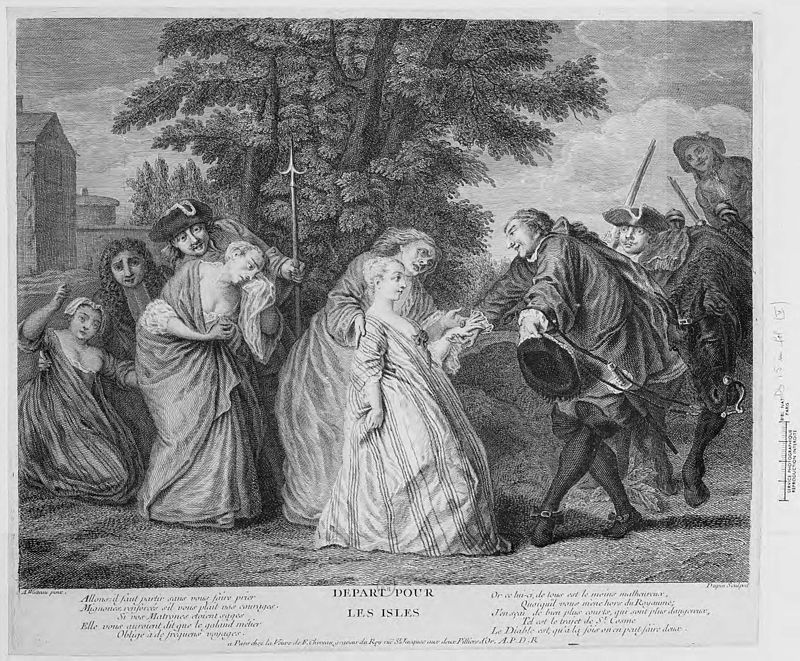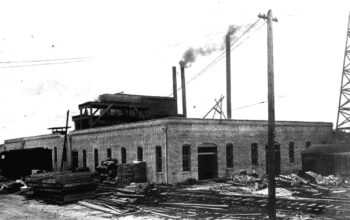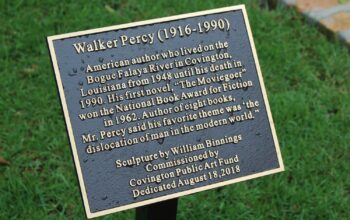by Lindsay Reed
Nine parishes in Louisiana have the distinction of being named after saints. The last time I had the pleasure of visiting the Northshore, I was curious about who St. Tammany was and the results of my query surprised and delighted me. St. Tammany is the only one of the parishes not named for a Christian saint. Tammany is a variation of the name Tamanend. He was a chief of the Native American Lenni-Lenape tribe who made a pact with William Penn. This pact, dated 1683, stated that his tribe (later called the Delaware tribe by English speakers) and the Quaker colonists settling in Pennsylvania would live in peace “as long as the creeks and rivers run and the sun, moon, and stars endure.” Tamanend’s name means ‘Affable One’ in his tribe’s native language. While the European colonists and Native Americans did not live in peace for as long as the pact so beautifully stated, Chief Tamanend was respected and honored by a great many people and is called a patron saint of America. May 1st marks festivals held in his honor featuring the ringing of bells. He is remembered in musical and visual art and his name has graced numerous social clubs, a middle school in Pennsylvania and, of course, the southern Louisiana parish.
Not long after I discovered the story of the namesake of the Northshore parish, I came across the story of the first Native American to be canonized as a Roman Catholic saint. Her name is St. Kateri Tekakwitha. She became a saint in 2012 and her patronage includes Native Americans, orphans, ecology and the environment. She was born in 1656 and lost her parents in a smallpox outbreak when she was four years old. The illness also left her face scarred and her eyesight impaired. Her father was a Mohawk chief and her mother, a Christian, hailed from the Algonquin tribe. Tekakwitha, as she was called before her baptism, was raised by her paternal aunt and uncle, also a Mohawk chief. She refused to marry and was baptized by Jesuit priests on Easter Sunday 1676 at the age of 19. At this time she adopted the name Kateri in honor of Saint Catherine of Siena. Neither of these decisions garnered approval from her tribe and she endured both social and physical hardships as a result.
When it became dangerous for her to remain in the village Father Jacques de Lamberville, the Jesuit missionary who baptized her, advised she journey nearly 200 miles to a Jesuit missionary settlement at Kahnawake where she could practice her faith with less severe opposition.
Kateri arrived at Kahnawake, outside of Montreal, and spent the remainder of her life there. Although she was born in New York her relics are kept and venerated at the site of her death. For the last three years of her life Kateri continued to offer up acts of self-mortification and penance as well as intense devotion to prayer. She was no longer being punished by her tribe for being a Christian but she was still unable to participate in the religious life of a nun because of her ethnicity. She was allowed to take private vows of celibacy on March 25, 1679 and she had fellowship with a group of Christian Iroquois women who shared her views on dedicating their life entirely to God. The Jesuits were impressed with her piety and her life was well documented by Fathers de Lamberville, Chauchetire and Cholenec, which helped secure her canonization as the first Native American saint. Kateri died on Holy Wednesday April 17, 1680 and Father Cholenec wrote that her smallpox scars faded 15 minutes after her death and her face was suffused with beauty. This was the start of miracles being attributed to Kateri Tekakwitha and confirmed to the Jesuits who had lived with her that she had spiritual powers.

Recently I was curious who the first African American saint was and this time I was once again surprised but also hopeful. I was surprised because as of yet there has not been a canonized African American saint but there are several cases pending. I was hopeful because one of those cases is that of Henriette Delille, a New Orleans woman. If she is canonized she will have the distinction of being both the first African American saint as well as the first saint from New Orleans. Her story mirrors some of the same difficulties that St. Kateri faced and it would be wonderful for the first person with African ancestry sainted in America to be a woman whose story demonstrates devotion and perseverance in the face of difficulties which we struggle with to this day. The case for Mother Henriette Delille to be considered for sainthood was opened in 1988 and all her documents were gathered and sent to Rome in the summer of 2005. Hurricane Katrina hit that August and New Orleans underwent a tragedy that could be likened to the physical and emotional suffering that many saints experience. Mother Henriette’s case progressed over the years and on March 27, 2010 she was deemed Venerable by the Roman Catholic Church. This title signifies that she lived a life of heroic virtue. It is two steps away from the title of Saint, for which two verified miracles are necessary. Those miracles are currently being investigated and if both are authenticated then Henriette Delille will become the first New Orleans Saint.
Henriette was born in 1812, the same year that the first cargo arrived in New Orleans by steam from Natchez. The city would undergo many changes in her lifetime, as the cargo entering New Orleans became immigrants between 1830-1840 and the city became the third largest in the United States. Henriette’s great great grandmother Nanette had arrived from West Africa and was a slave until the death of her owner. Nanette earned enough money to buy the freedom of her daughter Cecile and two of her grandchildren. Henriette was born a free person of color to Marie-Josephe Diaz and Jean-Baptiste Lille Sarpy. Marie educated her daughter in literature, music and nursing, raising her to participate in the placage system.

This was a social institution in which wealthy white men attended quadroon balls with the intent to meet and develop relationships with mixed race women. These relationships would be treated as common law marriages, also called ‘mariage de la main gauche’ (left-handed marriages) and would frequently result in families. Often the men would also marry white women and have a legal marriage and legitimate heirs as well. This was the arrangement Henriette was born into because it was illegal for her parents to marry. Her family expected that she would also participate in the placage system and there are indications she did have a relationship of this nature with a man. Records show that Henriette gave birth to two sons, both of whom had the same name and that both boys died before age three. These tragedies and the subsequent grief resulted in Henriette experiencing a religious transformation. At age 24, she wrote in her prayer book – “Je crois en Dieu. J’esp’re en Dieu. J’aime. Je veux vivre et mourir pour Dieu.” (I believe in God. I hope in God. I love. I want to live and to die for God.) She was no longer willing to live her life the same way.
Hemriette’s relationships with her family were strained by her decision to no longer live within the societal norms in place for free women of color in New Orleans at the time. Henriette’s mother Marie had two other children and they all listed themselves as white on the census but Henriette decided to identify herself as a free person of color. This decision prohibited her admittance as a postulant into both the Ursuline and Carmelite orders because they only accepted white women. Marie died in 1836 and Delille was free to pursue her goal to start a religious order for women of color. Along with friends Juliette Gaudin, Josephine Charles, Marie Jeanne (a French woman dedicated to the cause) and several free women of color, Henriette started an organization they named the Sisters of the Presentation of the Blessed Virgin Mary on November 21, 1836. Their goal was to provide an opportunity for women in New Orleans, including women of color, to come together to show devotion to God through serving those in need. Their motto was “To be of one heart and one soul.” Father Ettienne Rousselon was a benefactor to the women after his arrival in New Orleans in 1837 and assisted them in receiving recognition for the order. Their ministry became the Sisters of the Holy Family Order in 1842, on the same date of November 21. Only Henriette and Juiliette witnessed the official formation of their order that day as Marie Jeanne could not because of her ethnicity and Josephine did not join them until the next year. The ladies educated slaves and free people of color, both children and adults, at a time in America’s history when it was illegal to do so. Henriette used her monetary means as well as the education her mother and mentors provided her to help people in need of both knowledge and healthcare. It was another decade before the Sisters took formal vows of poverty, chastity and obedience on October 15, 1852.
At this time Henriette officially became Mother Superior of the Sisters of the Holy Family Order. Mother Henriette passed away at age 50 on November 17, 1862. The Order consisted of 12 members at the time of her death but continued to grow and provide services for those in need. Today the Lafon Nursing Facility and St. Mary’s Academy are part of Mother Henriette and the Sisters of the Holy Family Order’s legacy in East New Orleans, as well as schools in Texas, Florida, Arkansas and Louisiana and missions in Texas, California, Washington D.C. and Belize. The devastation of Hurricane Katrina profoundly affected both Lafon Nursing Facility, which was rebuilt and reopened in 2010, and St. Mary’s Academy which reopened in 2011 to a rebuilt and updated campus. New Orleans and Henriette Delille have gone through a great deal of change and loss at pivotal points together and the road to put things in order has been an arduous one.
I feel it is important to note that the Venerable Henriette Delille was a multiracial CrÈole. This is a blending of ethnicities including French, Spanish, African, Native American and European common in New Orleans because of historical and geographical factors.

It would be erroneous to only mention Mother Delille’s African ancestry. But that part of her ancestry did play a significant part in contributing to the challenges and discrimination she faced in her life as well as where she focused her compassion and life of service. St. Kateri was born of two Native American tribes and also experienced the strain of her family’s disapproval for the path she chose to devote herself to but she endured all that suffering and forged an irrefutable link as a Native American Roman Catholic saint. One of the translations for St. Kateri’s name Tekakwitha is “she who puts things in order”. That can be a difficult endeavor genealogically as well in any aspect of life. I think it is a common feeling among Americans to not be entirely sure of their complete ethnic heritage and to be surprised by the results of genetic testing. The United States has a unique history of immigration. Some immigrants arrived by choice to pursue a better life for themselves and their descendants. Some people were brought by force and endured a great deal of sorrow to contribute to the population of this country. Many people felt a pressure to pass as American and sever cultural ties to their country of origin after the physical act of transplantation. This can be likened to the pressure Mother Henriette felt to pass as white in her time. But she did not wish to be untrue to herself and her heritage and I find that heroic. New Orleans and America share a common theme of blending together ethnicities, religions, languages and art and it would be a great event for New Orleans to have a native born Saint.

Finally, Mother Henriette is relatable at this time in history because she faced societal pressure to conform to certain sexual and social norms within which she did not wish to live. Our country is in the midst of confronting the same sort of difficult issues concerning what is acceptable and how long we will continue to tolerate openly known secrets that contribute to the suffering of vulnerable populations and the overall dysfunction of our society. Mother Delille is an excellent candidate for sainthood in the post #metoo era because she experienced the pain of growing up and living as an adult within the plaCage system. Through personal tragedy she showed the tremendous bravery to say, “Not me. No longer”. She continued to demonstrate amazing courage throughout the rest of her life to help people in need. Many people in the world today need the encouragement of stories of brave women who came out on the other side of suffering to rebuild a life of dignity and compassion. Anyone can be inspired by the story of a life of heroic virtue. To become a saint, the Venerable Henriette Delille needs her story to reach more people. It can become overwhelming to only see the shortcomings of society in this day and age. But there is also the chance to have a say in who we deem holy.
Let’s pray for our first New Orleans Saint.
Submitted by Lindsay Reed
Works Cited
Kyriakodis, Harry. ìRespectfully Remembering the Affable One.î Hidden City Philadelphia RSS, Hidden City, 7 May 2014, hiddencityphila.org/2014/05/respectfully-remembering-the-affable-one/.
The Gale Group Inc. ìKateri Tekakwitha.î Encyclopedia of World Biography, Encyclopedia.com, 2018, www.encyclopedia.com/people/philosophy-and-religion/roman-catholic-and-orthodox-churches-general-biographies/kateri.
Rasmussen, John. ìSaint Kateri (Kateri Tekakwitha).î The Canadian Encyclopedia, Historica Canada, 19 Nov. 2012, www.thecanadianencyclopedia.ca/en/article/tekakwitha-kateri/.
Scott, Mike. ìFull Steam Ahead: The Invention That Forever Transformed New Orleans — and the Country.î NOLA.com, NOLA.com, 5 Feb. 2018, www.nola.com/300/2017/03/new_orleans_steamboat_history_1812.html.
Moss, Candida. ìWill America Finally Get Its First Black Saints?î The Daily Beast, The Daily Beast Company, 2 Apr. 2017, www.thedailybeast.com/will-america-finally-get-its-first-black-saints?ref=scroll.
Chatelain, Kim. ìThe First Real New Orleans Saint? Henriette Delille’s Path to Canonization.î NOLA.com, NOLA.com, 2 Mar. 2017, www.nola.com/religion/index.ssf/2017/03/henriette_delille.html.
Villarrubia, Eleonore. ìMother Henriette Delille, New Orleans Native, Declared Venerable.î Catholicism.org, 14 July 2016, catholicism.org/mother-delille-new-orleans-native-is-declared-venerable.html.
Pope, John. ìSt. Mary’s Academy Celebrates Milestone on Road to Recovery from Hurricane Katrina.î NOLA.com, Times Picayune, 6 Apr. 2011, www.nola.com/education/index.ssf/2011/04/st_marys_celebrates_milestone.html.
Stockman, Dan. ìHistory of Rebuilding Helps Sisters of the Holy Family after Hurricane Katrina.î Global Sisters Report, National Catholic Reporter, 23 June 2016, globalsistersreport.org/news/ministry/history-rebuilding-helps-sisters-holy-family-after-hurricane-katrina-40551.
Stuart, Bonnye E. More than Petticoats. GPP, 2009. pg 25-34
Ferreira, Marion. ìFrom a Creole Perspective.î FrenchCreoles.com, http://www.frenchcreoles.com/Henriette_Delille2(Marion_Fererra).html



